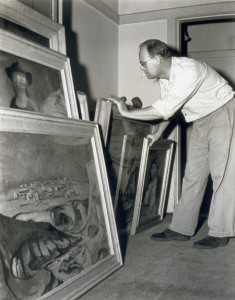
Going back to the late eighteenth century, Australia and New Zealand were dominated by European settlers; colonialism was its shaping force. For the most part, they were separated from the world of art until 1939 when the Melbourne Herald organized a major art exhibition including works by the Post-Impressionists such as Cezanne, Gauguin and Van Gogh. Also included in the exhibition were the Cubists such as Picasso, Braque and Leger, Surrealists such as Dali.
Until this time, to see such works artists had to go abroad, or rely on photographs for reference. This was difficult for many and it was complicated for them to paint in a society which perceived Impressionists with caution. However, in the 1950s and 60s a more complex account of Australia came into view in the painting of Sidney Nolan, Albert Tucker, Arthur Boyd and Russell Drysdale. Although there were Expressionist and Surreal elements in what these artists painted, there was little in Western painting that was similar to it. They gave their pictures a sense of story similar to that of the American painter Ben Shahn.
One of my favorite paintings of this period is The Outstation (1965) by the Australian artist, Russell Drysdale (not shown because of possible use infringement). His art provided an insight into life in the townships of the Australian outback, creating a sort of mythology from monotony. With Drysdale, there is no story as might relate to Ben Shahn’s works. However, in some of his paintings, he depicted outback townships men sat reading newspapers or were standing in streets. In The Outstation an aboriginal fixes the viewer with depthless eyes. When viewing his paintings, one does get the feeling that there is a story within the scenes, unchanging and merciless, almost like a recurring dream.
